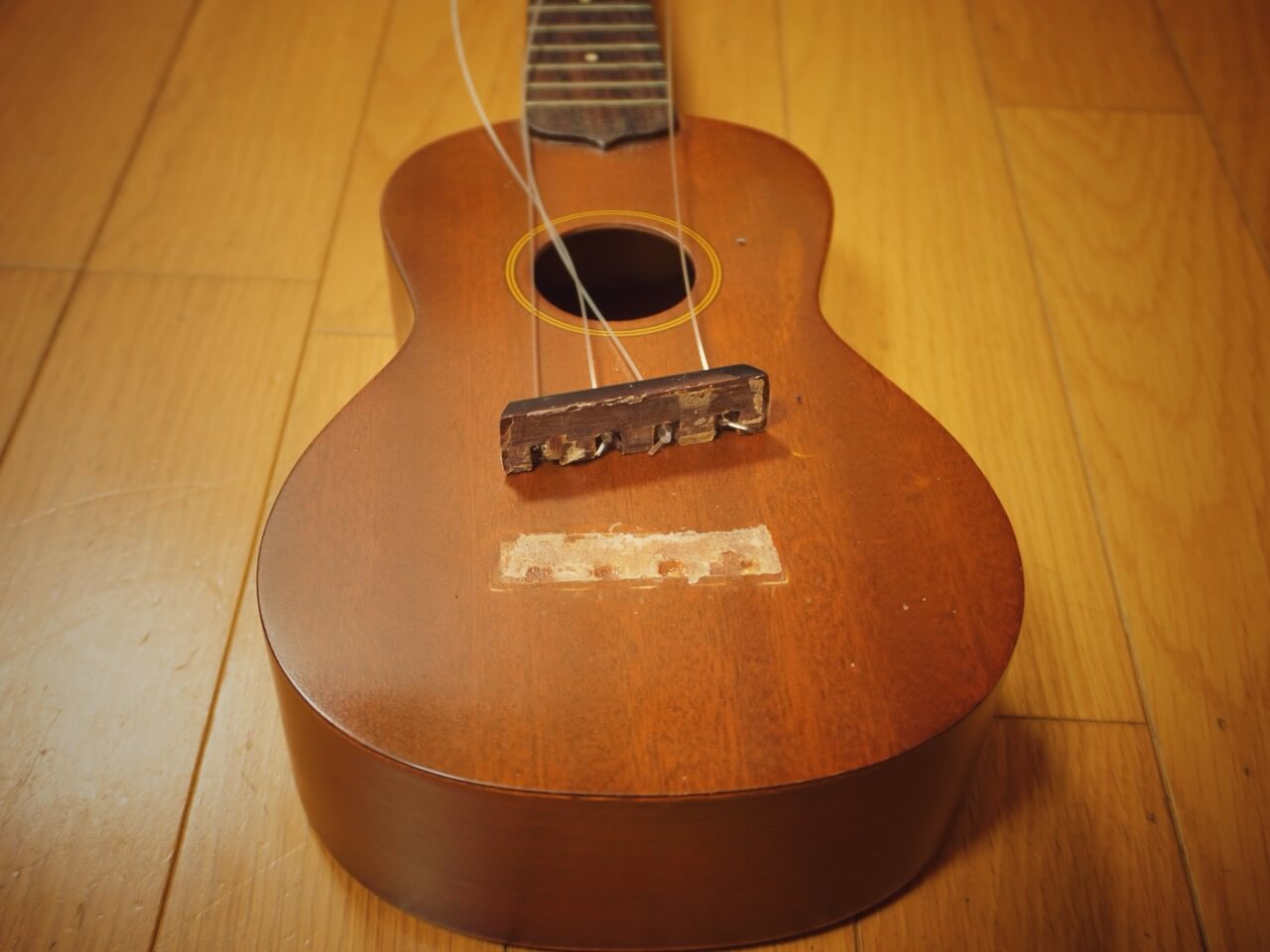
How to repair a ukulele bridge failure with gelatin
The ukulele bridge that I do as a hobby has come off.
I will show you how to repair this with gelatin.
Applying woodworking technology that has been practiced for over 5,000 years
I repaired it safely, but the fact of the shock was finally discovered.
【table of contents】
1. The bridge comes off
2. I don't use woodworking bonds for musical instruments
3. Adhesive for musical instruments
4. What adhesive will you use this time?
5. Start repair
6. Glue with gelatin
6−1. 1 day has passed
7. Stretch the strings
8. I'll try it ...
9. I changed the strings
10. The shocking facts! ??
11. Last thought
12. Explained in the video
The bridge comes off
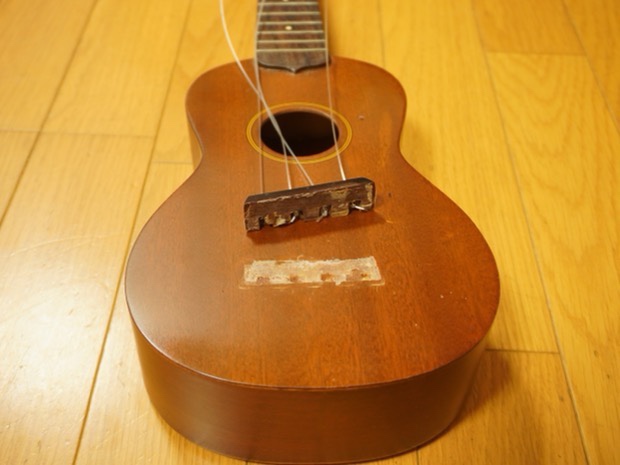
I only play the ukulele once in a while. When I took it out after a long time, it looked like this.
As you can see, the bridge is peeling off.
With this, no sound can be produced.
Must be glued.
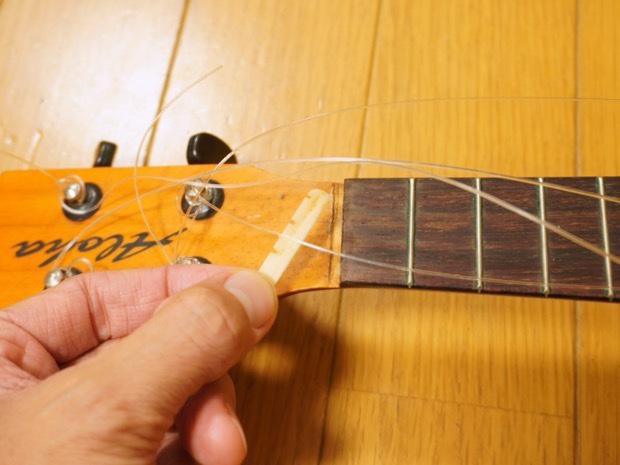
This part is called a nut, but the nut is also removed.
The nut does not need to be firmly attached because it can be pressed down by stretching the strings.
It's okay to just lightly attach it.
b It's a shock because the instrument broke, but in fact, I did the same thing five years ago.
At that time, I put it in a car under the scorching sun in the middle of summer.
It is natural that the instrument will break because it was exposed to high temperature conditions.
I repaired it and it was okay for 5 years.
But this time, I kept it at home all the time, but it broke.
I would like to repair it again.
I don't use woodworking bonds for musical instruments
Normally, these things are made of wood, so if you think in common sense, I think it would be better to attach a woodworking bond. However, for musical instruments, we do not use woodworking bonds.
Woodworking bonds have strong adhesive strength, but when they harden, they have elasticity.
The hardened woodworking bond is so elastic that if you press it with your nails, it will leave marks on your nails.
Its elasticity is unsuitable for musical instruments.
If it is elastic, it will absorb the vibration of the instrument.
In the case of the ukulele, the vibration of plucking the strings is transmitted from the bridge to the body, the entire body vibrates, and the sound sounds as if the sound comes out from the hole.
So, if you glue the bridge with a woodworking bond, it will absorb the vibrations and the sound will be worse.
Adhesive for musical instruments
Use glue or tight bond to bond the instrument.
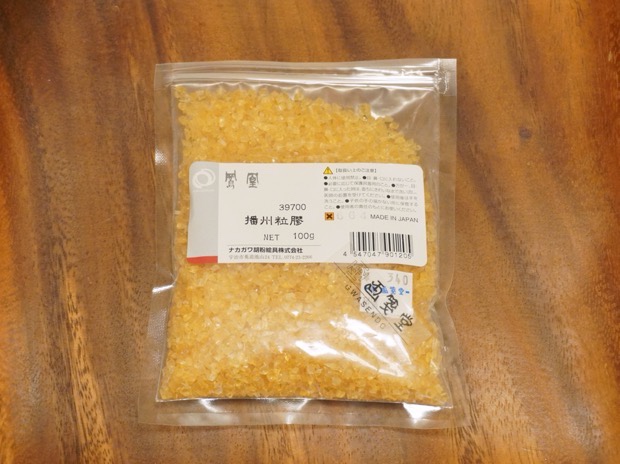
This is glue.
I bought this and repaired it 5 years ago when the bridge came off as well.
This is sold at an art supply store.
I don't know what to use for Japanese painting, but anyway, it is sold as a painting material for Japanese painting.

It looks like coffee sugar.
It is made from animal skins and bones, and its main component is protein. Dissolve this in hot water and use it as an adhesive.
It seems that it has been used for woodworking since ancient times more than 5000 years ago. Nowadays, it is used to make musical instruments such as guitars, violins, and ukuleles.
Those glued with glue can be warmed and peeled off, or they can be peeled off with hot water.
Therefore, if it is placed in a high temperature condition such as in a car in midsummer, the instrument will break.
Although it has such fragility, it has the advantage that it is easy to repair and adjust the instrument.

Titebond is a scientifically made bond with glue properties.
Since it does not dissolve in water, it cannot be peeled off with hot water, but it can be peeled off with heat.
What adhesive will you use this time?

Gelatin is an increased purity of glue.
Gelatin is the gelatin that makes jelly.
Glue and gelatin are basically the same.
So you can also make jelly with glue.
Glue contains impurities and is not recognized as a food product.
Gelatin is made into food by removing impurities and increasing its purity.
This blog is a cooking blog, so this time I will try using gelatin, which is an ingredient, instead of glue.
So, fix the instrument with gelatin.
Start repair
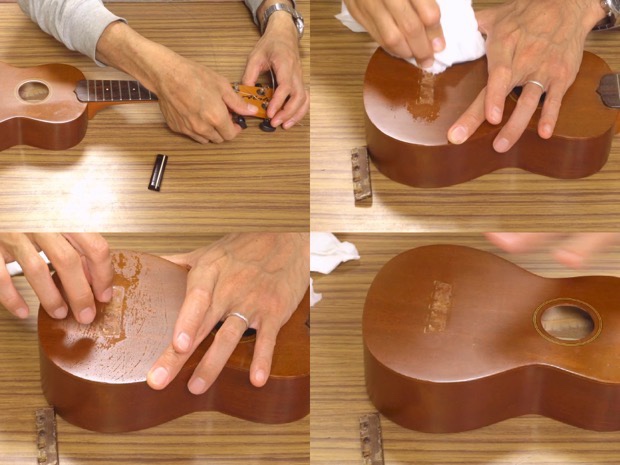
First, remove the strings.
I've been using this string for about 5 years, so I'll take this opportunity to change it to a new string.
Remove the sticky adhesive.
Here is the glue from the last repair.
When I wiped it with a wet cloth, the glue softened and softened while I was wiping it, so I was able to scrape it off with my nails.
Wipe it clean at the end.
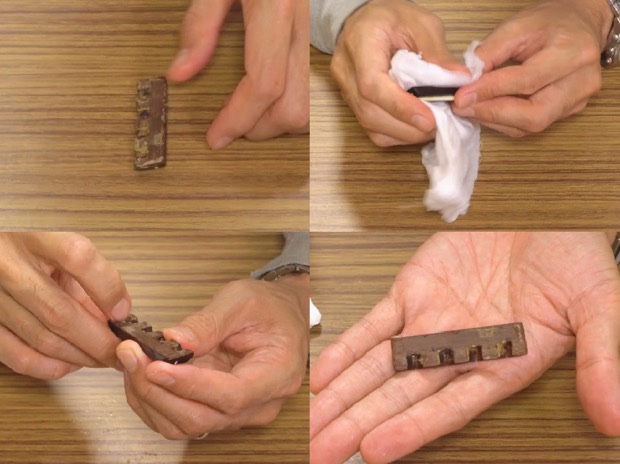
Next, wipe the bridge side with a wet cloth in the same way, and peel it off with your nails.
It has become beautiful.
Glue with gelatin
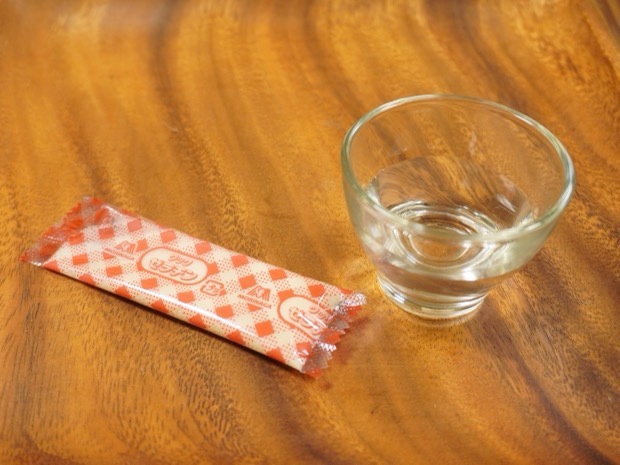
【Adhesive material】
Gelatin 5g
Water 20ml
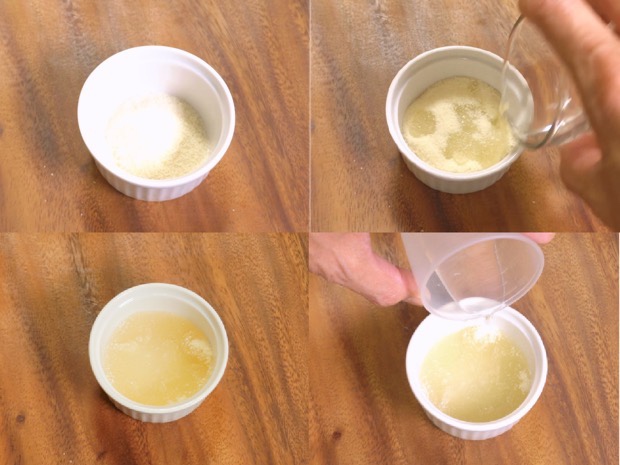
Now let's make an adhesive with gelatin.
Put gelatin in a cocotte, add water and leave it for about 1 minute to soak.
After 1 minute, there was a part that did not absorb a little water, so I sprinkled a little water on that part as well.

When it was heated in a 600w microwave oven for 20 seconds, it became a toro-toro adhesive.
Apply this first to the bridge and then to the body.
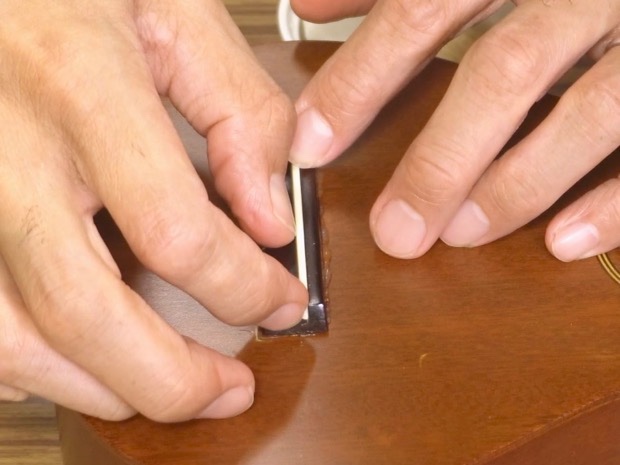
Then press firmly.
Press down until the bridge and body are in close contact.
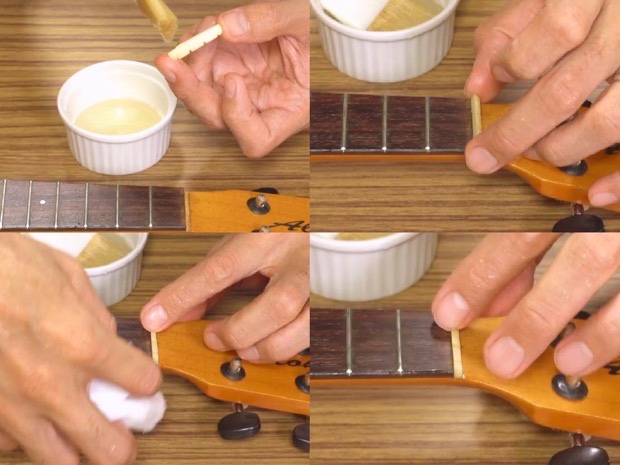
Apply adhesive to the nuts and stick them together.
Wipe off the protruding part.
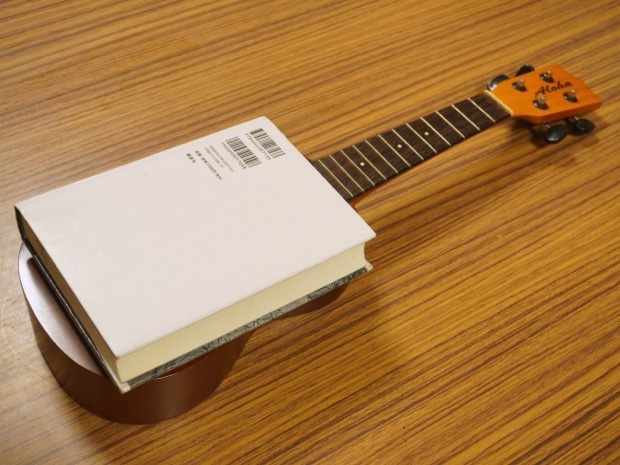
Then put a thick book on the bridge and fix it for a day.
Ideally, it should be clamped, but I don't have such a tool, so it's a compromise.
1 day has passed
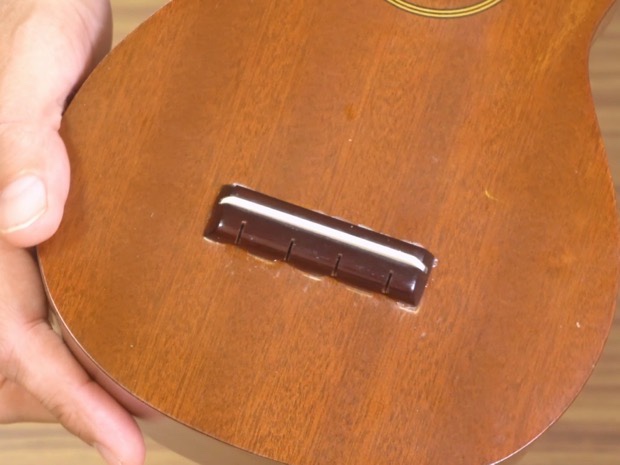
It sticks properly.
The adhesive is sticking out a little, but it's okay.
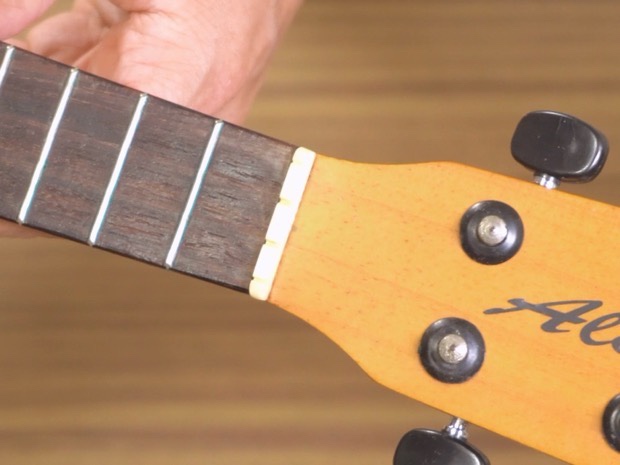
The nut is also attached properly.
This fixed the instrument.
Stretch the strings
The instrument has been fixed, but it doesn't make any sound unless the strings are stretched.
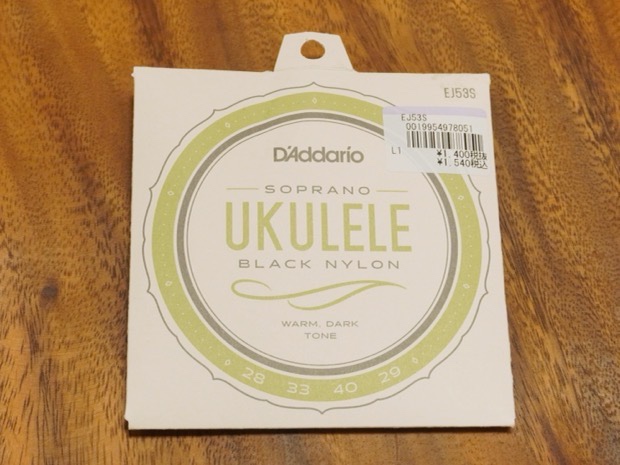
I bought such a string.
It's a little expensive at 1540 yen (tax included), but I thought I'd buy expensive strings to increase my motivation.
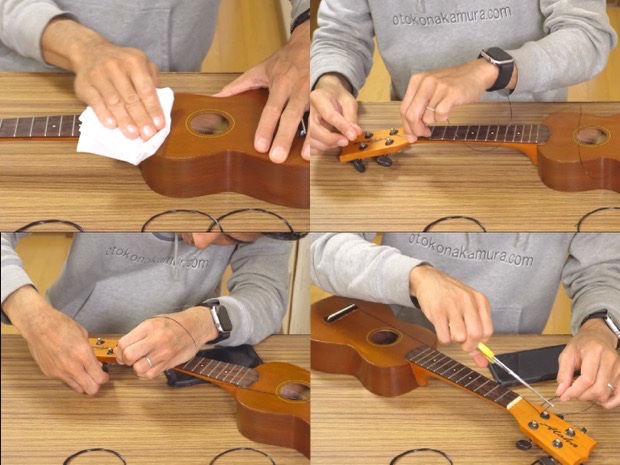
First, spray oil to wipe off any dirt.
This kind of maintenance can only be done without strings, so I'll do it now.
And I stringed it.
It was the second time in my life to string the ukulele, so it took me about 2 hours to do some unfamiliar work, make mistakes and start over.
I'll try it ...

And I tried playing it, but it sounded really weird.
I thought I might have made a mistake in my selection, so I replaced it with a different string.
I changed the strings
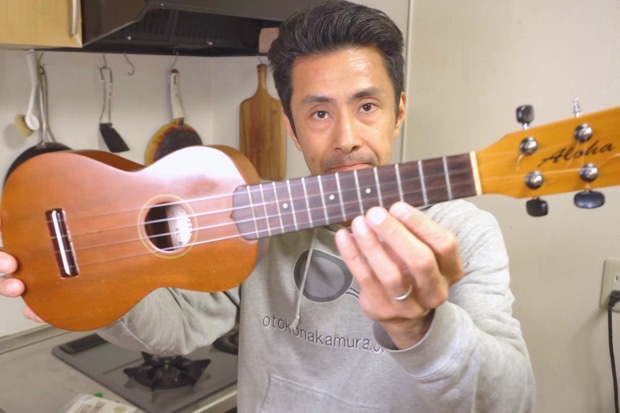
I changed the strings
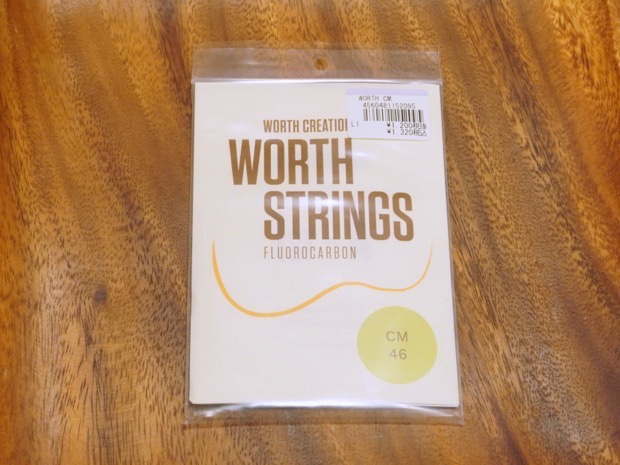
This string is made of the same material as the fishing line called fluorocarbon.
So I tried playing it, but it didn't sound convincing.
The shocking facts! ??
I was worried for three days, wondering what to do with such a strange sound, maybe the repair method was not good.
So, I was worried for 3 days and finally realized.
I tuned it one octave lower.
No wonder, it was a loose sound.
What a low-level mistake!
I'm really sorry.
I threw away the first string I stretched.
That string also had a strange sound because it was tuned incorrectly, so I threw it away even though it wasn't bad.
It's a shame, but it's cheap considering the tuition fee.
When I raised it by one octave, I was worried that the strings would get stronger than I expected and would cut.
Also, I was worried that the bridge might break because of the tension of the strings.
But the ukulele is fine.
In the end, it sounded better than before.
This is motivating.
Last thought
That's why it became like talking about string replacement from the middle, but the most important thing to say is that gelatin can be used to repair ukuleles.
I was able to repair it safely and the sound was better than before.
Perhaps gelatin is more pure and sounds better than glue.
I changed from nylon strings to fluorocarbon strings, so I think it's actually the difference in sound due to the difference in the strings.
Maybe the difference in adhesive also has an effect.
Or maybe the way it was glued was good.
If you play an instrument with that in mind, you will have a different joy.
In that way, musical instruments have the pleasure of creating their own sounds while maintaining them.
In the first place, this instrument is insanely cheap, so if you buy a higher instrument, you can make a good sound, but I'm thinking of enjoying it according to my wallet situation.
The pursuit of sound is endless once it is pursued.
You can spend as much money as you like.
It's not just the sound.
Expression and technology are something that goes on forever.
In my case, I'm a beginner in terms of expression and technology, so I'm not at the level of digging into it yet, but there is no end.
I would like to improve my expression and technique as much as time permits.
Explained in the video
In the video, I appear and talk passionately.
The sound you are playing can only be conveyed in the video, so please have a look.
